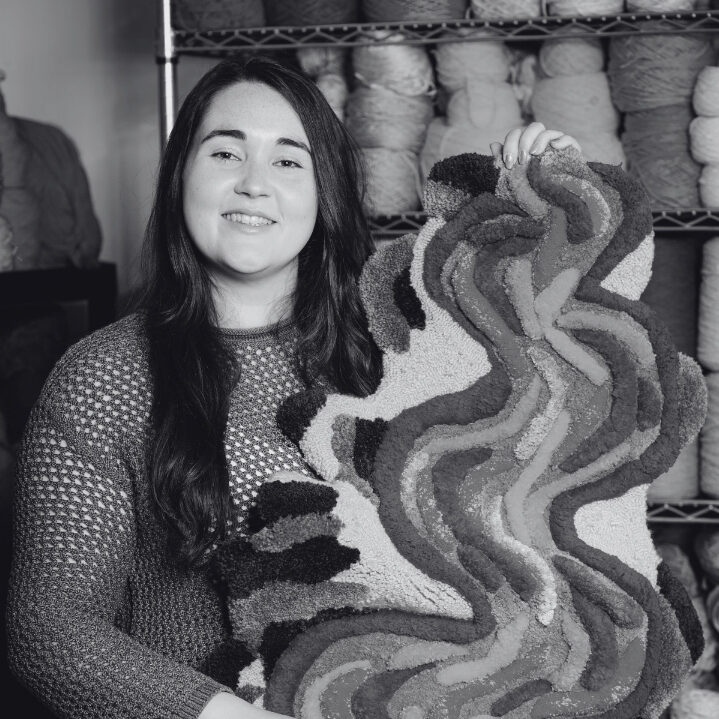
Meet the Artist
Abigail Henthorne
Abigail Henthorne is a textile artist who constructs fiber drawings using yarn. She lives in Arkansas and utilizes various weaving and knot-tying techniques, such as crochet, embroidery, latch hook, and tufting, to generate diverse marks. She finds her subject matter in the natural world. Exploring nature’s individuality, Henthorne investigates the visible world while highlighting the world’s rarest living creatures—endangered species. Observing diverse terrains and bodies of water, she finds beauty in the biologically established color palettes nature yields and reimagines them with fiber.
Artist Statement
One’s media holds not only the weight of the artist but also its subject matter. Each mark is made intentionally and
with a purpose, meant to harbor deeper connections to the world surrounding it. Drawings allow one to capture one’s
focus clearly and concisely. Showing the viewer all that is meant to be absorbed. Textiles, on the other hand, often in
Fine Art, have astigmatism, often being classified as a craft rather than a serious medium. Being overlooked for its
feminine attributes and warm tendencies, I have fused the two concepts to actualize fiber drawings. Merging the intensive attention to diverse mark-making and the tactile aspect of storytelling, endangered species is the motif prominently being discovered and reimagined in this textile studio. By combining new and ancestral techniques, abstract fiber drawings are constructed to bring awareness and life back to neglected wildlife. The knotted and tangled forms and figures create a sense of tactile longing, causing the viewer to reach out. This multisensory viewing experience creates a dialog between the existing piece and the individual making contact. By honing my subject’s unrecognizability and only sampling the hues found in its form, the abstracted silhouette plays with the concept of the species’ oblivion from the work and its environment. Thus creating a working relationship between the two. The piece cannot exist without the subject. And the viewer cannot experience the subject if they aren’t willing to tangle themselves with the wildlife’s descent.